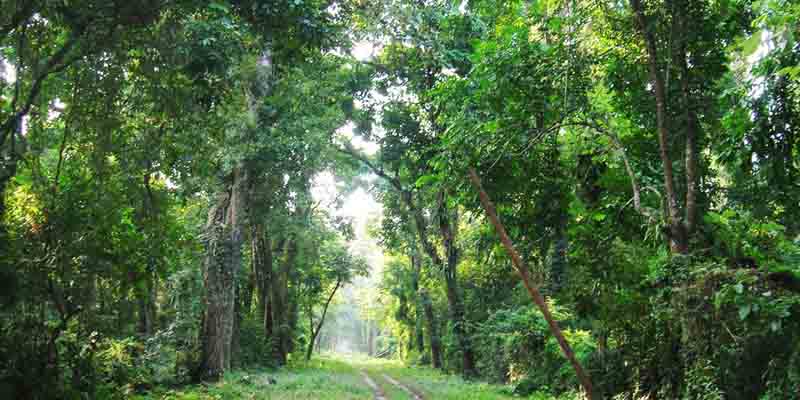- India
- Jun 10
Assam notifies Dehing Patkai and Raimona as national parks
• Dehing Patkai in Assam was declared as the seventh national park in the state.
• On June 5, the Raimona National Park in the Bodoland Territorial Region (BTR), bordering Bhutan, was notified as a national park.
• The Wild Life (Protection) Act, 1972 says whenever it appears to the state government that an area, whether within a sanctuary or not, is, by reason of its ecological, faunal, floral, geomorphological or zoological association or importance, needed to be constituted as a national park for the purpose of protecting, propagating or developing wild life therein or its environment.
• With this, Assam now has seven national parks, which is the second highest number in the country.
The other five national parks in Assam are:
• Kaziranga National Park
• Manas National Park
• Nameri National Park
• Orang National Park
• Dibru-Saikhowa National Park.
• Madhya Pradesh and Andaman and Nicobar Islands have nine national parks each.
Dehing Patkai National Park
• Dehing Patkai is located inside the larger Dehing Patkai Elephant Reserve, which spreads across Dibrugarh, Tinsukia and Sivasagar districts of Assam.
• It has unique floral and faunal diversity, which was recognised by the state government in 2004, when 111.19 sq km of the area was notified as Dehing Patkai Wildlife Sanctuary.
• Forest and wildlife conservation have now been further strengthened as another 123.07 sq km has been added to the original sanctuary area.
• The area is home to hoolock gibbon, elephant, slow loris, tiger, leopard, clouded leopard, golden cat, fishing cat, marble cat, sambar, hog deer, sloth bear, and several bird species including the endangered state bird, the white-winged wood duck.
• Till date, 47 mammal species, 47 reptile species and 310 butterfly species have been recorded.
• The notified national park includes areas falling within the existing Dehing Patkai Wildlife Sanctuary along with Upper Dehing reserve forest (West Block) and Jeypore reserve forest.
• The National Park comprises pristine forests along the Assam-Arunachal interstate boundary, classified as the Assam Valley Tropical Wet Evergreen Forest.
Raimona National Park
• The Raimona National Park falls under BTR’s Kokrajhar district and is a part of contiguous forest patch with an area of 422 sq km covering the northern part of the notified Ripu Reserve Forest which forms the western-most buffer to Manas Tiger Reserve in the foothills of Eastern Himalaya Biodiversity Hotspot.
• The boundary of Raimona National Park stretches from the Sonkosh river on the west along the inter-state boundary of West Bengal and Assam from Indo-Bhutan border and Saralbhanga River on the east, runs northwards till it touches the Indo-Bhutan international boundary on the north and remaining part of Ripu Reserve Forest on the south.
• The national park shares contiguous forest patches of Phibsoo Wildlife Sanctuary and Jigme Singye Wangchuck National Park in Bhutan, creating a transboundary conservation landscape of more than 2,400 sq km.
• Such secured transboundary ecological landscape will ensure long term conservation of endemic species like Golden Langur — the mascot of BTR — and endangered species like Asian Elephant Elephas maximus, Royal Bengal Tiger Panthera tigris and varied other flora and faunal species it supports.
• Historically, the area was a part of the migratory route of the faunal species from Himalayan Mountain, Indo-Malayan and Indo-Chinese areas towards west and Peninsular Indian realm species to the east.
• The national park forms the western most buffer to the Manas Tiger Reserve which is one of the nine such reserves in India first declared by Project Tiger in 1973. The area is also an integral part of Manas Biosphere Reserve (BR) and Chirang-Ripu Elephant Reserve (ER).
Manorama Yearbook app is now available on Google Play Store and iOS App Store

